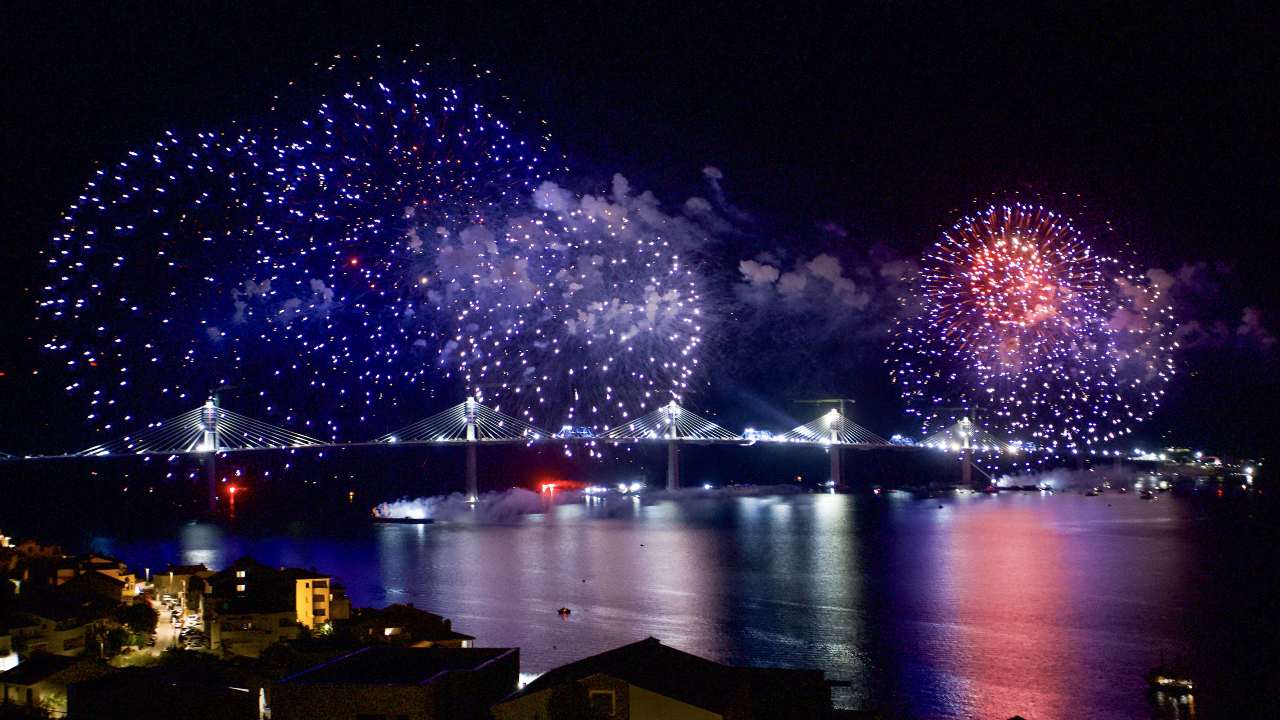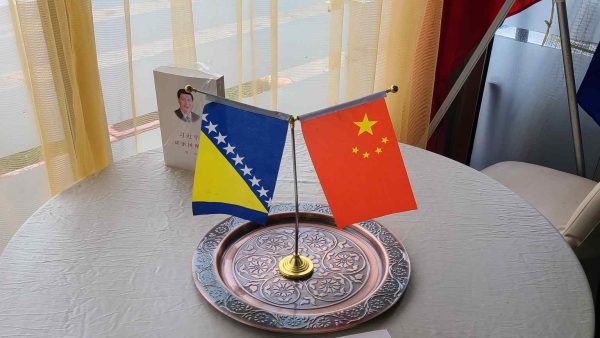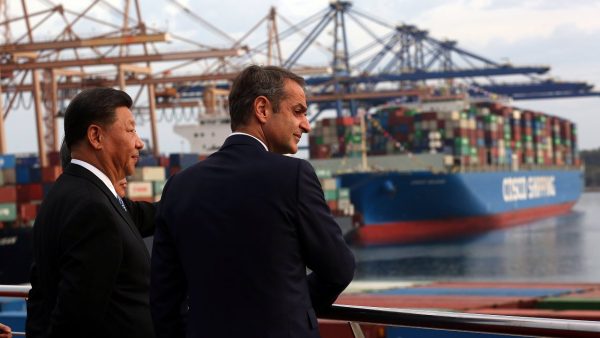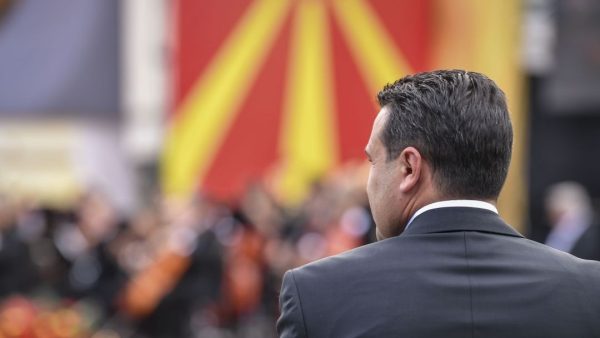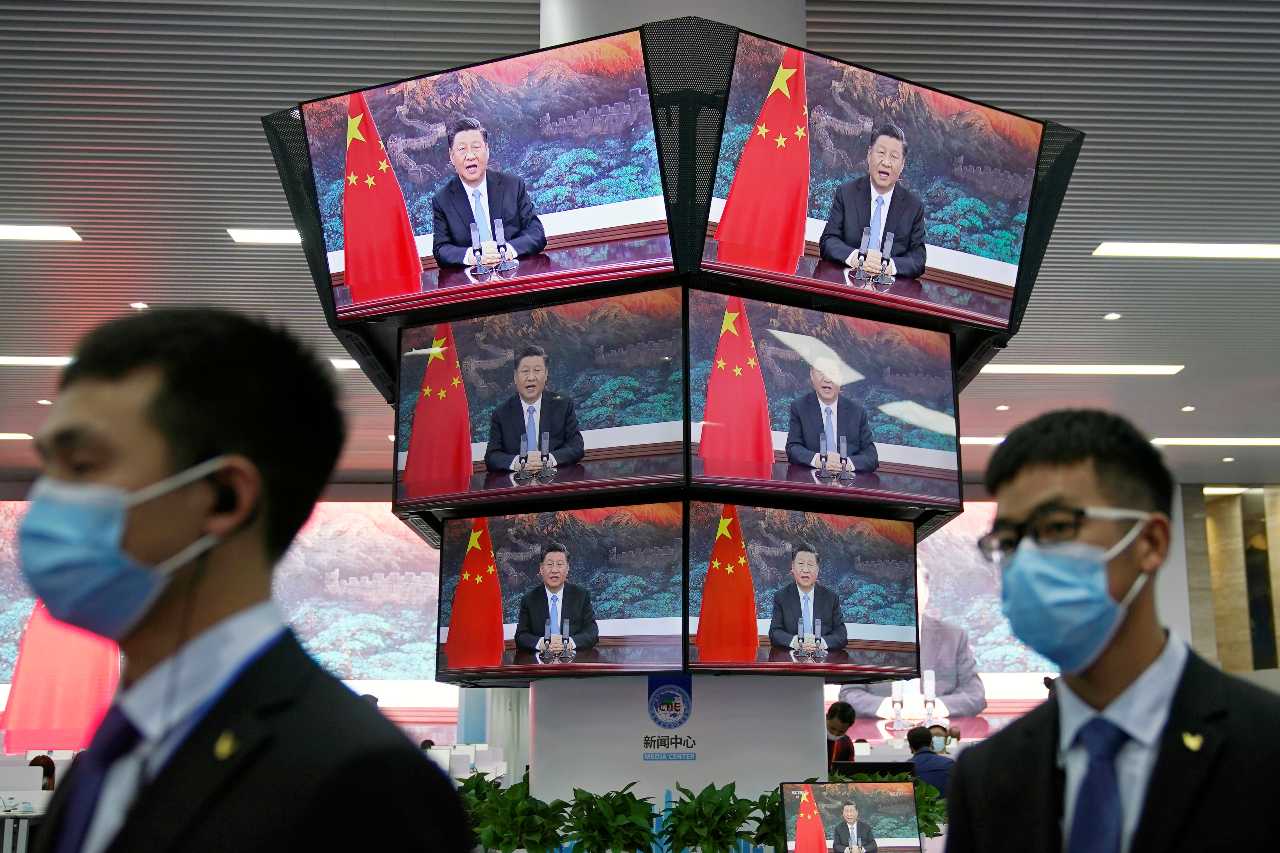This report is a part of #CCPinCEE, a series of reports published by the Center for European Policy Analysis (CEPA) analyzing Chinese influence efforts and operations across the nations of Central and Eastern Europe.
Goals and objectives of CCP malign influence
Since Croatia and China established diplomatic relations in 1992, the two governments have organized several meetings to establish stronger economic and cultural ties. China’s overall presence in Croatia, particularly its malign influence, is limited compared with some other CEE countries as well as Western Balkan countries. There has been nothing in the public record indicating China has attempted to discredit Croatia’s electoral system or influence its domestic and international policy.
The relationship between the two countries focuses on economic cooperation, which has intensified since 2017. In June 2017, Croatia obtained $394 m from the European Commission to build the Pelješac Bridge in the south of Croatia, which amounted to 85% of the construction cost. In January 2018, the construction contract was awarded to China’s state-owned China Road and Bridge Corporation (CRBC) for $340 m. Media reports said the Chinese company bested its competitors by committing to complete the project faster and for less money.1 The bridge was of special interest to China, as it would give reference to Chinese companies for further bids for EU-funded infrastructure projects. Siniša Malus, head of communications of the Chinese Southeast European Business Association, said the project was a way for China to enter the European market.2
There are some other relevant investments and proposed projects, such as a potential bridge to connect the island of Pašman, near Zadar, with mainland Croatia. The project would also indirectly connect the island of Ugljan, which is linked with Pašman via a short bridge, to the mainland. Croatia hopes to receive EU funds for the project, but if that fails, a public-private partnership is an option.3 CRBC has offered to help fund the project and hopes to stay in the Balkans, avoiding having to ship its equipment and workers back to China.4
In late December 2021, the Croatian government and the city of Rijeka signed a contract for the construction of a wastewater treatment plant. The work will be carried out by the China Energy Engineering Group Jiangsu Power Design Institute and Sumec Complete Equipment and Engineering. The cost of the project, a bit more than $7 m, is 71% co-financed with EU funds.5
In 2019, Norinco, a Chinese company, acquired 76% of the Croatian Energija Projekt company for $35 m, allowing it to build and operate the Senj wind farm for 23 years and presenting China as an actor in the green transition.6 Work on the wind farm started in July 2019 and finished in December 2021. At an estimated cost of $253 m, it is the first large greenfield investment by China. At a ceremony testing the operation of the wind farm, Croatian Prime Minister Andrej Plenković said the project reflects his country’s good relations with China and demonstrates Croatia’s commitment to meeting its goals of climate neutrality by 2050.7
Additionally, in 2018, a company backed by Chinese investors obtained a 76% stake in Zadar port in central Dalmatia.8 Another Chinese consortium was interested in the port of Rijeka, but in early 2021, Croatia annulled a tender in which that group of companies had made the lowest bid, apparently under pressure from the US and the EU.
Apart from energy and infrastructure projects, Chinese investors have shown interest in tourism and technologically innovative companies, such as electric-car maker Rimac Automobili, in which the Chinese Camel Group invested $33 m in 2017. The following year, the two companies opened a factory in China that produces components for electric cars and buses for China’s market. The joint venture cost $158 m, of which Rimac Automobili put in $5.5 m, while its partner bears the remaining cost. Rimac Automobili gets 40% ownership of the factory.9
CCP’s methods, tools, and tactics for advancing malign influence
The main platforms for cooperation are annual study visits for Croatian journalists, which have been suspended since COVID-19 struck. Academic, business, and expert exchanges have also taken place, but were put on hold during the pandemic.
Since a Confucius Institute was established at the University of Zagreb in May 2012, its free language courses have grown increasingly popular, with enrollment hitting about 2,000 In 2019.10 The institute supports the university’s Sinology Department, which was established in 2004. Since 2021, the Confucius Institute has focused on tourism, creative industries, and digital transformation.11
In May 2013, China and Croatia signed a three-year agreement to organize student exchanges and offer yearly scholarships to Chinese and Croatian students, with the Chinese side granting tuition for various educational fields. China pledged 200 government-funded scholarships from 2013 to 2018 to promote youth exchanges and educational cooperation between the two countries.12
Furthermore, to mark the Chinese New Year in 2016, Zagreb’s main square hosted 80 terracotta warrior sculptures, inspired by the famous Terracotta Army (or the Terracotta Warriors and Horses) discovered in the tomb of Qin Shi Huang, the first emperor of China. The Croatian president, prime minister, mayor of Zagreb, and other dignitaries attended the New Year celebration, where students at the university’s Confucius Institute performed the dragon dance.13 Several months later, the institute organized the first Dragon Boat Festival, also known as the Duanwu Festival, on Jarun lake in Zagreb. The now-annual festival includes activities such as a boat race, kite making, paper cutting, and calligraphy.
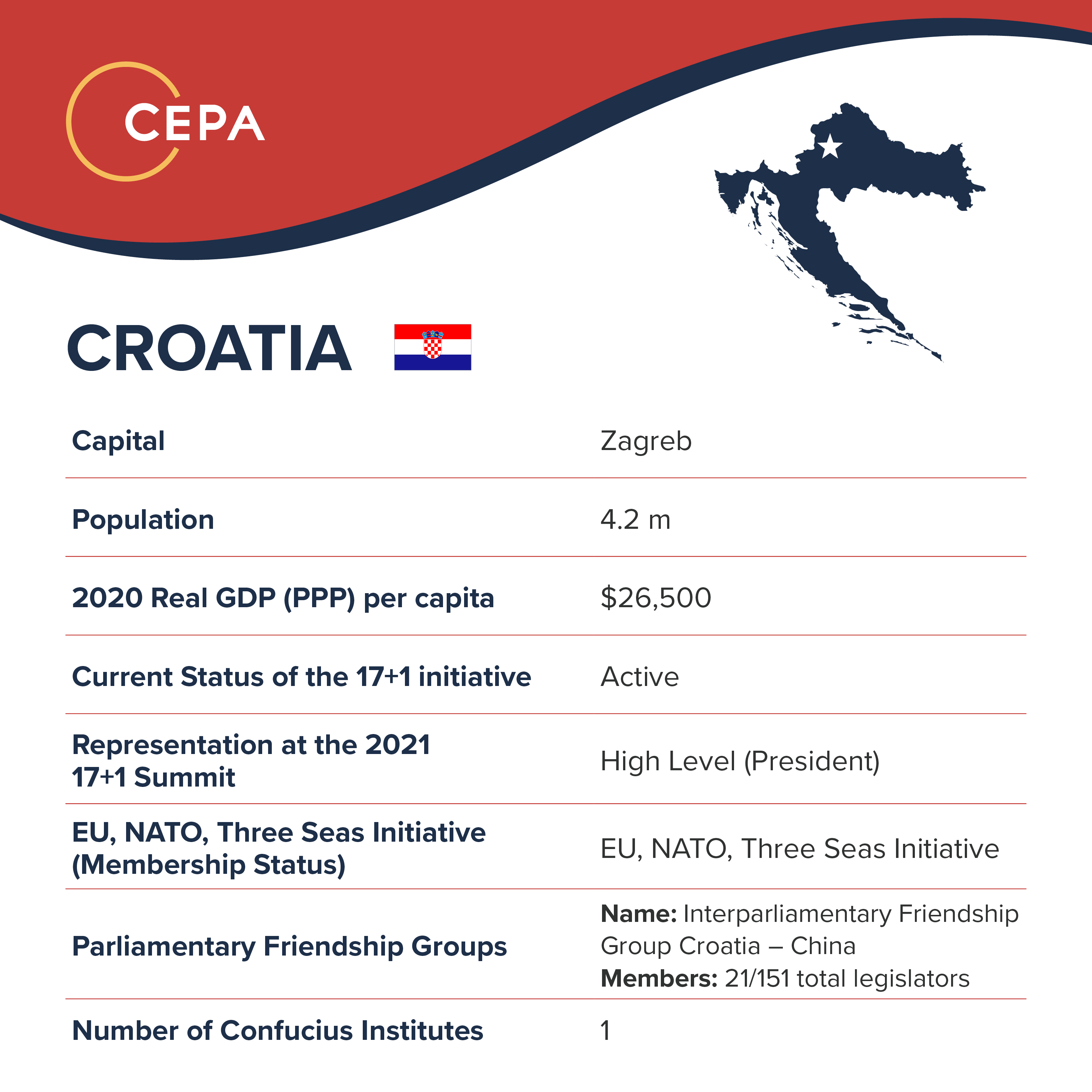
Sources: The World Factbook 2022, (Washington, DC: Central Intelligence Agency, 2020), https://www.cia.gov/the-world-factbook/; World Bank, The World Bank Group, 2022, https://www.worldbank.org/en/home; “Interparliamentary Friendship Group Croatia – China,” Croatian Parliament, retrieved June 27, 2022, https://www.sabor.hr/en/parliamentary-friendship-groups-membership/interparliamentary-friendship-group-croatia-china-10-term
Reach of influence measures
Formal institutional cooperation between Croatian and Chinese media organizations is minimal.14 The Croatian News Agency (Hrvatska izvještajna novinska agencija, or HINA) exchanges news with the Xinhua agency.15 Media stories on Chinese projects are positive or neutral, strictly relating facts. Analytical pieces on China’s activities or general presence in Croatia are rare, and the public seems to have little interest in these topics. Chinese commercial advertising, with the exception of Huawei, is also minimal.
Chinese influence in Croatia is primarily focused on high-ranking officials in government. Chinese diplomats regularly meet with ministers, mayors, and MEPs. Also of interest are former high-ranking officials and relevant figures from business, sports, and academia.16
In June 2022, the Chinese ambassador to Croatia gave a long interview to the Voice of People’s Diplomacy magazine 17 marking 30 years of relations between China and Croatia. He underlined mutual trust and respect, and both countries’ wish for closer friendship and cooperation.18
In April 2019, China’s prime minister, Li Keqiang, visited Croatia with a 250-strong delegation as part of a summit of the 16/17 +1 initiative. Li met with the Croatian prime minister, the president, the speaker of the parliament, and other officials and signed six agreements related to railways, agriculture, digital technology, and tourism.19 The two sides signed a memorandum of understanding on investments; Huawei Croatia signed a memorandum to encourage cooperation in digitization,20 and China and Croatia signed a memorandum on cooperation in sports.21 Since 2019, Huawei has sponsored the Seeds for the Future program in cooperation with Croatia’s Central State Office for the Development of the Digital Society. The program was meant to include annual study trips to China for Croatian students, but because of the pandemic, the only trip so far was in 2019. In three years, 36 Croatian IT students have gone through Seeds for the Future.22
In November 2018, the Croatian National Tourist Board opened an office in Shanghai,23 barely two months before officials proclaimed 2019 the year of Croatian-Chinese culture and tourism.24
During the 16/17+1 summit,25 which Croatia hosted in the city of Dubrovnik, participating countries adopted “The Dubrovnik Guidelines for Cooperation between China and CEE Countries.”26

Photo: Chinese President Xi Jinping (2nd L) speaks during a meeting with Croatian President Kolinda Grabar-Kitarovic (R) at the Great Hall of the People in Beijing, China, October 14, 2015. Credit: REUTERS/Parker Song/Pool.
Conclusion
Overall, the Chinese presence in Croatia does not seem to be controversial. Cooperation has focused on economic relations, taking into account the significant power asymmetry between the two countries. As a member of the EU, however, Croatia must align its foreign policy with the European foreign and security policy. If European and broader Western relations with China continue to strain, this dynamic will be also reflected in Croatia’s position toward China.
- “Potpisan ugovor sa Kinezima o izgradnji Pelješkog mosta,” Radio Slobodna Evropa, April 23, 2018. https://www.slobodnaevropa.org/a/29186868.html [↩]
- Jelena Prtoric, “In Croatia, China’s building its bridge to Europe,” China Dialogue, May 11, 2020, https://chinadialogue.net/en/transport/12005-in-croatia-china-s-building-its-bridge-to-europe/ [↩]
- “Ministar prometa Butković : ‘Nakon Pelješkog, slijedi most za Pašman. Za 700.000 kuna radi se studija izvodljivosti. Bit će gotova do kraja godine,’” Zadarski.hr, July 26, 2021, https://zadarski.slobodnadalmacija.hr/zadar/kalelarga/ministar-prometa-butkovic-nakon-peljeskog-slijedi-most-za-pasman-za-700-000-kuna-radi-se-studija-izvodljivosti-bit-ce-gotova-do-kraja-godine-1115291 [↩]
- Luka Ivan Jukic, “After Pelješac, China and Croatia Eye a New Bridge Project,” China Observers in Central and Eastern Europe (CHOICE), September 20, 2021, https://chinaobservers.eu/after-peljesac-china-and-croatia-eye-a-new-bridge-project/ [↩]
- “Potpisan Ugovor za izgradnju uređaja za pročišćavanje otpadnih voda aglomeracije Rijeka,” Croatian Ministry of Economy and Sustainable Development, December 28, 2021, https://mingor.gov.hr/vijesti/potpisan-ugovor-za-izgradnju-uredjaja-za-prociscavanje-otpadnih-voda-aglomeracije-rijeka/8551 [↩]
- Dorotea Prpić, “Kinezi pri kraju velike investicije: Vjetropark kod Senja u rujnu kreće u probni rad, bit će najveći u Hrvatskoj,” Novi list, February 28, 2021, https://www.novilist.hr/rijeka-regija/vjetropark-kod-senja-u-rujnu-krece-u-probni-rad/ [↩]
- “Projektom Vjetroelektrane Senj približavamo se ostvarivanju ciljeva u proizvodnji energije iz obnovljivih izvora,” Press Release, Croatian Government, December 12, 2021, https://vlada.gov.hr/vijesti/projektom-vjetroelektrane-senj-priblizavamo-se-ostvarivanju-ciljeva-u-proizvodnji-energije-iz-obnovljivih-izvora/33503 [↩]
- “Kineski investitori preuzimaju Luku Zadar,”Investitor.me, August 29, 2017, https://investitor.me/2017/08/29/kineski-investitori-preuzimaju-luku-zadar/ [↩]
- Bernard Ivezić, “Rimac za milijardu kuna gradi tvornicu u Kini,” Poslovni dnevnik, March 13, 2018, https://www.poslovni.hr/hrvatska/rimac-za-milijardu-kuna-gradi-tvornicu-u-kini-338674 [↩]
- “Confucius Institute offers free Chinese language courses in Zagreb,” Hina, August 16, 2019, https://m.hina.hr/#content/10143370 [↩]
- “O nama”, Konfucijev Institut Sveučilišta u Zagrebu, https://www.ki.unizg.hr/o-nama/ [↩]
- “Education Exchange,” Embassy of the People’s Republic of China in the Republic of Croatia, September 3, 2020, http://hr.chineseembassy.org/eng/zkgx/jyjl/ [↩]
- “Croatian President and Prime Minister Attend Chinese New Year Celebrations in Zagreb,” Croatia Week, January 31, 2016, http://www.croatiaweek.com/croatian-president-prime-minister-attend-chinese-new-year-celebrations-in-zagreb/; “Croatian students perform Dragon dance for Chinese New Year,” China Daily, January 28, 2016, http://www.chinadaily.com.cn/world/2016-01/28/content_23283562.htm. [↩]
- Vladimir Shopov, “‘Gettingon the Radar’: China’s Rising Media Presence in South East Europe,” Konrad Adenauer Foundation and the European Council on Foreign Relations, 2020 https://bird.tools/wp-content/uploads/2020/12/%E2%80%9CChina%E2%80%99s-Rising-Media-Presence-in-South-East-Europe%E2%80%9D.pdf [↩]
- “2020 Work Report of the Administrative Council,”Hina Supervisory Board, 2021 https://www.hina.hr/Content/Static/Uv_2020.pdf [↩]
- “Embassy Events” Embassy of the People’s Republic of China in the Republic of Croatia, http://hr.china-embassy.org/eng/sgxx/sghd/ [↩]
- The journal is Glas narodne diplomacije and is published by the Coordination of Croatian Friendship Associations from Zagreb. The latest issue is not yet available online, earlier issues can be seen here https://www.khdp.hr/index.php/izdanja/gnd [↩]
- “Chinese Ambassador to Croatia, H. E. Mr. Qi Qianjin Accepted an Exclusive Interview with the ‘Voice of People’s Diplomacy’ Magazine about the 30th Anniversary of the Establishment of China-Croatia Diplomatic Relations and Other Topics,” Embassy of the People’s Republic of China in Croatia, June 10, 2022, http://hr.china-embassy.gov.cn/eng/dssghd/202206/t20220610_10701816.htm [↩]
- “Chinese PM arrives in Zagreb to strengthen modern Silk Road,” Press Release, Croatian Government, April 9, 2019, https://vlada.gov.hr/news/chinese-pm-arrives-in-zagreb-to-strengthen-modern-silk-road/25707 ; “Croatia and China open ambitious chapter in economic and trade relations,” Press Release, Croatian Government, April 10, 2019, https://vlada.gov.hr/news/croatia-and-china-open-ambitious-chapter-in-economic-and-trade-relations/25727 [↩]
- “Croatia and China open ambitious chapter in economic and trade relations,” Press Release, Croatian Government, April 10, 2019, https://vlada.gov.hr/news/croatia-and-china-open-ambitious-chapter-in-economic-and-trade-relations/25727 [↩]
- “Croatia and China signed the Memorandum on Cooperation in the Field of Sports,” Croatian Olympic Committee, April 10, 2019, https://www.hoo.hr/en/olympism/international-cooperation/5640-croatia-and-china-signed-the-memorandum-on-cooperation-in-the-field-of-sports [↩]
- “https://www.racunalo.com/seeds-for-the-future-huawei-predstavio-osam-novih-studenata-koji-su-zavrsili-program/Remarks by Ambassador Qi Qianjin at the Huawei Croatia: Seeds for the Future 2021 Program Closing Ceremony,” Embassy of the People’s Republic of China in Croatia, December 15, 2021, http://hr.china-embassy.gov.cn/eng/dssghd/202112/t20211215_10469795.htm [↩]
- Ivana Barišić “U Šangaju otvoren ured Hrvatske turističke zajednice,” Tportal.hr, November 5, 2018, https://www.tportal.hr/biznis/clanak/u-sangaju-otvoren-ured-hrvatske-turisticke-zajednice-20181105 [↩]
- “Plenković i Li: Hrvatsko-kineskom godinom kulture i turizma potvrđujemo prijateljstvo hrvatskoga i kineskog naroda,” Press Release, Croatian Government, April 10, 2019 https://vlada.gov.hr/vijesti/plenkovic-i-li-hrvatsko-kineskom-godinom-kulture-i-turizma-potvrdjujemo-prijateljstvo-hrvatskoga-i-kineskog-naroda/25710 [↩]
- Greece joined the 16+1 initiative at the summit in Croatia in 2019 turning it into the 17+1 initiative. Lithuania left the 17+1 initiative in 2021. [↩]
- “Dubrovnik Guidelines,” 8th Summit of Central and Eastern European Countries & China, April 12, 2019, https://www.ceec-china-croatia.org/files/dubrovnik-guidelines.pdf [↩]

